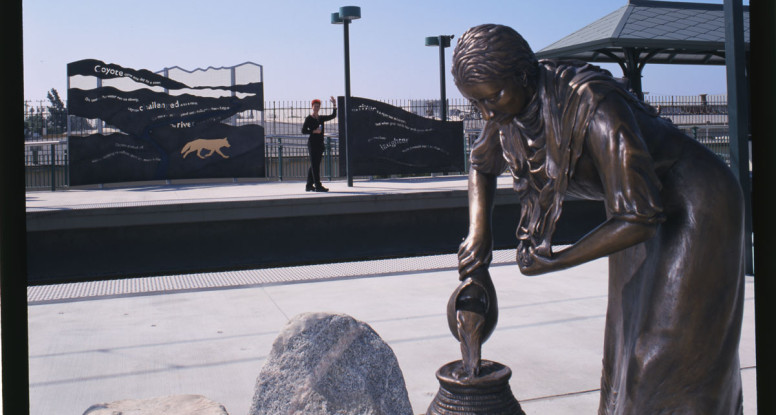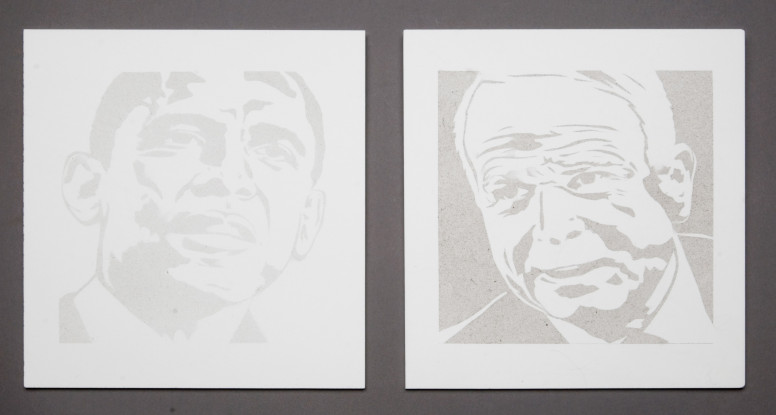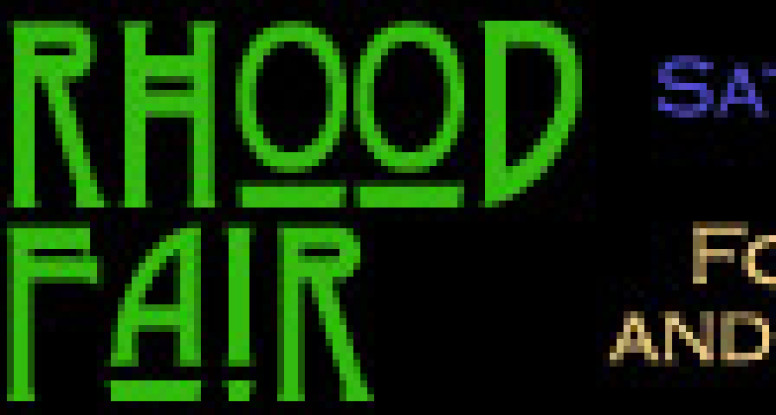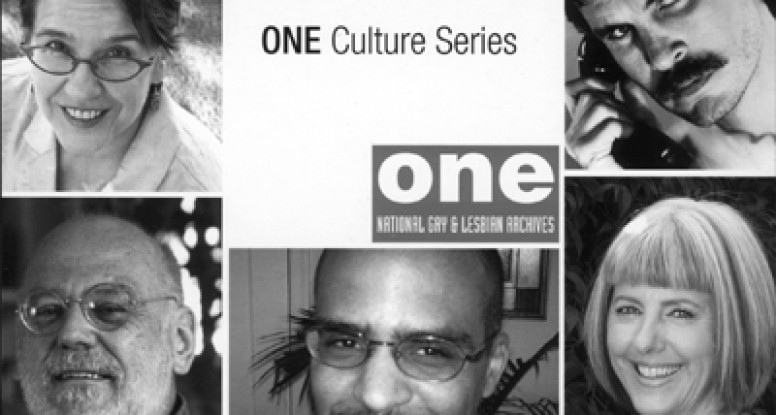My participation in the College Art Association related events continues! Saturday will feature an all day look at feminist art presented by TFAP (The Feminist Art Project). It’s free and open to the public. I went to this in New York two years ago and it was fabulous. From 2-3:15, I will be on a panel with Catherine Opie and Andrea Bowers—a generational look at feminist art (I’m the elder in this case). My friends Phranc and Nancy Popp will be doing short performances, as well as many others. Details are below.
TFAP @ CAA 2009
New Brunswick, NJ—The Feminist Art Project (TFAP), in its fourth year of creating events about feminist art announces several events at the College Art Association (CAA) annual conference 2009 in Los Angeles, California. CAA is a founding program partner of TFAP. Started by Arlene Raven, Judy Chicago, and Susan Fisher Sterling, the Feminist Art Project is administered by Rutgers University’s Institute for Women and Art, under the auspices of the associate vice president for academic and public partnerships in the arts and humanities, and directed by Judith K. Brodsky and Ferris Olin.
These events include a day of panels, discussions, and performances and a bus tour, organized by Anne Swartz, Art History Department, Savannah College of Art and Design. These panels will focus attention on several urgent issues in art and feminism, with the bus tour highlighting the substantial contributions of contemporary women artists to public art in Los Angeles. These discussions, presentations, and performances offer a broad range of views and insights into the dialogue surrounding the history of feminist art and its energetic present and future. The bus tour has limited availability. Ticket information is available below. The day of panels is FREE and OPEN to the public.
The schedule for Saturday, February 26, 2009 will be as follows. All events will be held at the Los Angeles Convention Center, Room 502A, Level 2. The day of panels is FREE and OPEN to the public.
Interstitial Talk: Dena Muller, Art Table
9:00-10:30 a.m.
“Black Women, But, Are They Feminists? – Issues: their gender, their artwork, their lives as artists”
Suzanne Jackson, Savannah College of Art and Design
Panelists: Senga Nengudi, Independent Artist; Carrie Mae Weems, Independent Artist; and Linda Goode-Bryant, Independent Artist
This panel will examine questions about the past and present concerns women of color have had in the artworld surrounding feminism and feminist issues. The evolution of black consciousness for women and the complications of all women not seeking freedom from traditional roles remain important aspects of the dialogue surrounding race and gender for women of color.
Interstitial Performance: Nancy Popp, Harvard-Westlake School
10:45 a.m.-12:15 p.m.
“Salon des Refuses” or who was/is “in” and “out” of the recent feminist exhibitions
Maren Hassinger, Maryland Institute College of Art
Panelists: Moira Roth, Mills College; Joan Semmel, Independent Artist; Kris Kuramitsu, Independent Curator; Eve M. Fowler, Independent Art Historian
Recent feminist exhibitions, including “WACK!: Art and the Feminist Revolution,” received considerable press and attention, but did not include all of the women who played significant roles in the decade of the 1970s. This panel will consider what the situation and meaning is of not having one’s work recognized in these exhibitions.
Interstitial Performance: Phranc, Independent Artist
12:30-1:45 p.m.
Transnational Feminisms
Chairs: Yong Soon Min, UC Irvine and Connie Samaras, University of California, Irvine
Panelists: Leda Abdul, Afghanistan and Orange County; Sara Diamond, Ontario College of Art and Design; Maura Reilly, Brooklyn Museum of Art; Midori Yoshimoto, New Jersey City University
Given the proliferation of difference–some that matter and much that is superfluous–that characterizes the contemporary globalized art field, our conversation will center on markers of difference in the intersections of class, race, age, sexuality, nationality and media that signal notable shifts in our understanding of female subjectivity. Moreover, we will consider how these shifting understandings are imbricated within issues of translation in the transnational cultural traffic.
Interstitial Performance: Denise Uyehara, University of Arizona
2:00-3:15 p.m.
Artists Converse on Feminism
Chair: Maria Buszek, Kansas City Art Institute
Panelists: Andrea Bowers, California Institute of Arts; Cheri Gaulke, Harvard-Westlake School; Catherine Opie, University of California, Los Angeles
How do artists consider the questions about feminism in their art? How do artists consider these questions in various media? How does the social situation of women today impact their work? What is the status of the body, of the body beautiful in art? What political issues most engage feminist artists today? These are only a few of the points of discussion for this conversation between feminist artists working in different media and coming-of-age under different phases of feminist activism.
Interstitial Talk: Johanna Burton, Whitney Museum of American Art
3:30-5:00 p.m.
Performances Galore
Chair: C. Jill O’Bryan, Ph.D., artist and independent scholar based in New York and New Mexico
Panelists: Joanna Frueh, University of Arizona; Maureen Nappi, Long Island University; Martha Wilson, Franklin Furnace Archive, Inc.; Michelle Winowiak, Independent Artist; Jen Zakrzewski and Kristen Rhea van Liew, Independent Artists
Discussant: Tanya Augsburg, Ph.D., Assistant Professor of Liberal Studies, Liberal Studies Program, San Francisco State University.
With the recognition that scholarly feminist art commentary is best when grounded in artwork, these live performances precede an open discussion with the artists. This panel includes new performances by young and elder, famous and not-so famous feminist performance artists.








 This is the Unitarian Universalist Church that I attend in Pasadena. This Saturday, Jan. 31, 10 am – 4 pm, they will be hosting a Green Fair. There will be live music, environmental films, kids’ crafts, healthy food, vendors with sustainable products, a succulent sale, and more. It’s free!
This is the Unitarian Universalist Church that I attend in Pasadena. This Saturday, Jan. 31, 10 am – 4 pm, they will be hosting a Green Fair. There will be live music, environmental films, kids’ crafts, healthy food, vendors with sustainable products, a succulent sale, and more. It’s free!
